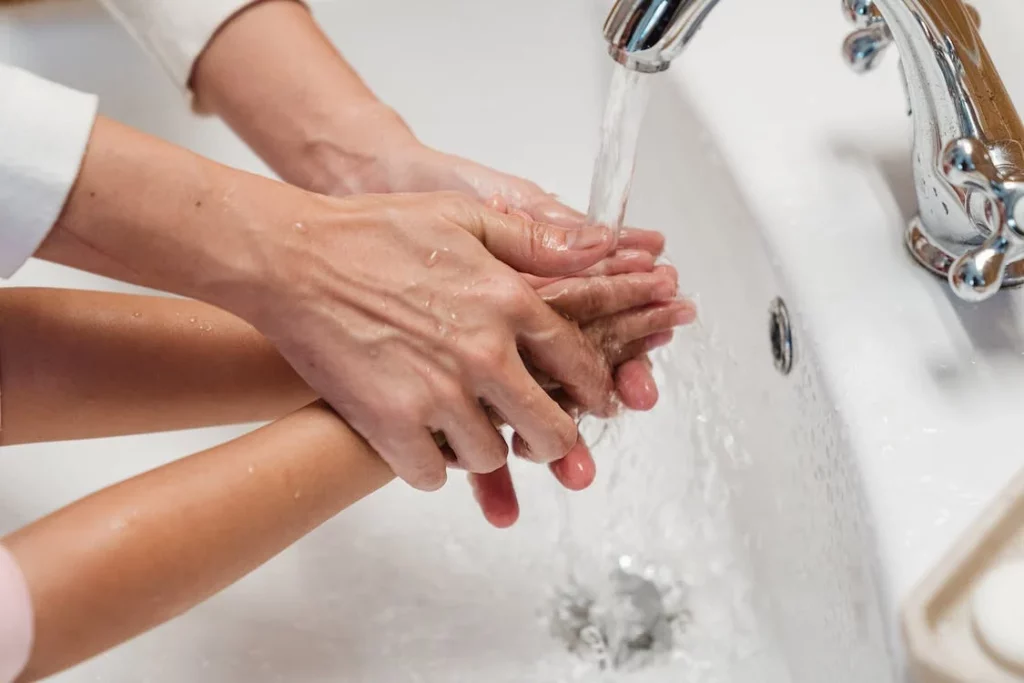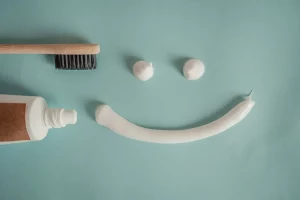How to Teach Kids About Personal Hygiene: A Comprehensive Guide


How to Teach Kids About Personal Hygiene: A Comprehensive Guide


Introduction
Teaching kids about personal hygiene is an essential aspect of their overall well-being and health. Instilling good hygiene habits from a young age not only promotes cleanliness but also helps prevent the spread of germs and illnesses. In this comprehensive guide, we will explore effective methods to teach kids about personal hygiene in a fun and engaging way, ensuring they develop lifelong habits that contribute to their overall health and happiness.
1. Lead by Example
1.1 Show Them the Way
Children often imitate their parents and caregivers. Demonstrating good hygiene practices yourself serves as a powerful example for your kids to follow.
1.2 Tips for Leading by Example
– Practice proper handwashing techniques in front of your children and explain why you do it.
– Encourage them to observe how you cover your mouth when sneezing or coughing and explain it’s a way to prevent the spread of germs.
2. Explain the Importance of Personal Hygiene
2.1 Make it Understandable
Discuss with your kids why personal hygiene is essential for their health and well-being. Use age-appropriate language and relatable examples to help them grasp the concept.
2.2 Tips for Explaining Importance
– Use storytelling or role-playing to illustrate the consequences of poor hygiene, such as getting sick or spreading germs to others.
– Emphasize that good hygiene habits help keep them and others healthy and happy.
3. Make Hygiene Fun
3.1 Turn it into a Game
Transform hygiene routines into enjoyable activities. Incorporate games, songs, or colorful props to make the experience fun and exciting.
3.2 Tips for Making Hygiene Fun
– Sing a handwashing song together while washing hands, making sure they wash for at least 20 seconds.
– Use bath toys to demonstrate proper bathing techniques and turn bath time into a playful experience.
4. Establish a Hygiene Routine
4.1 Consistency is Key
Create a daily hygiene routine and stick to it. Consistency helps reinforce good habits and makes hygiene a natural part of their daily life.
4.2 Tips for Establishing a Routine
– Set specific times for brushing teeth, bathing, and handwashing, and make it a part of their morning and bedtime routine.
– Use visual cues like charts or stickers to track their progress and celebrate achievements, making it a rewarding experience.
5. Teach Proper Handwashing
5.1 Handwashing Technique
Teach kids the proper handwashing technique: Wet, Lather, Scrub, Rinse, and Dry.
5.2 Tips for Proper Handwashing
– Show them how to use soap and water to wash all parts of their hands, including the back, between fingers, and under nails.
– Encourage them to wash hands for at least 20 seconds, especially before meals, after using the restroom, and after coughing or sneezing.
6. Emphasize Dental Care
6.1 The Importance of Brushing
Explain the significance of regular brushing and flossing to maintain healthy teeth and gums.
6.2 Tips for Dental Care
– Supervise and assist young children while brushing their teeth to ensure they do it correctly.
– Let them pick their toothbrush and toothpaste with their favorite characters, making dental care enjoyable.
7. Reinforce the Importance of Bathing
7.1 Make Bath Time Enjoyable
Encourage kids to view bath time as a fun and relaxing experience.
7.2 Tips for Bath Time
– Use scented bath products or bath toys to make bathing enjoyable and turn it into quality bonding time.
– Set a consistent bath time schedule to establish a routine and make it a calming end to the day.
8. Teach Germ Prevention
8.1 Explain How Germs Spread
Educate kids on how germs are spread through touching, sneezing, and coughing.
8.2 Tips for Germ Prevention
– Teach them to use a tissue or elbow to cover their mouth and nose when sneezing or coughing, and to dispose of used tissues properly.
– Discourage sharing personal items like towels or cups with others to minimize germ transmission.
9. Show How to Handle Food Properly
9.1 Safe Food Handling
Explain the importance of washing hands before eating and handling food.
9.2 Tips for Food Handling
– Teach them basic food safety practices, such as not eating raw or expired foods, and avoiding cross-contamination.
– Involve them in simple meal preparations to instill good food hygiene habits and a sense of responsibility.
10. Encourage Regular Hair Care
10.1 Hair Hygiene
Explain the importance of keeping hair clean and neat.
10.2 Tips for Hair Care
– Show them how to brush or comb their hair regularly to avoid tangles and maintain cleanliness.
– Use child-friendly shampoos and conditioners with pleasant scents to make hair care enjoyable.
11. Teach About Nail Care
11.1 Clean and Trim Nails
Explain the importance of keeping nails clean and trimmed.
11.2 Tips for Nail Care
– Show them how to clean their nails with a nail brush and soap regularly to remove dirt and germs.
– Demonstrate how to trim nails properly to prevent ingrown nails and maintain overall nail health.
12. Discuss Body Odor and Puberty
12.1 Puberty and Hygiene
As children reach puberty, it’s essential to discuss body changes and the need for additional hygiene practices.
12.2 Tips for Discussing Puberty
– Approach the topic with sensitivity and openness, allowing them to ask questions.
– Discuss the importance of regular showering, using deodorant, and changing clothes to manage body odor effectively.
13. Teach About Environmental Hygiene
13.1 Keeping Their Surroundings Clean
Explain the significance of maintaining a clean and tidy environment.
13.2 Tips for Environmental Hygiene
– Teach them to tidy up their room regularly and put away toys and belongings.
– Involve them in cleaning activities like dusting or sweeping to foster a sense of responsibility for their surroundings.
14. Use Storybooks and Media
14.1 Hygiene-themed Storybooks
Use storybooks or educational videos that focus on hygiene to engage kids and reinforce the importance of good habits.
14.2 Tips for Using Storybooks and Media
– Choose age-appropriate materials that resonate with your child’s interests and reading level.
– Discuss the story or video afterward to ensure comprehension and encourage discussion about hygiene habits.
15. Make Hygiene Kits
15.1 Personalized Hygiene Kits
Create personalized hygiene kits for your kids with their favorite colors and characters.
15.2 Tips for Making Hygiene Kits
– Include kid-sized toothbrushes, toothpaste, hand sanitizer, wet wipes, and tissues in the kits.
– Let them decorate the kits themselves to foster ownership and excitement about using them.
16. Utilize Technology
16.1 Interactive Apps and Games
Leverage technology to engage kids in interactive apps and games that focus on personal hygiene.
16.2 Tips for Using Technology
– Choose educational apps and games that teach kids about handwashing, dental care, and other hygiene practices in a playful and interactive manner.
– Set screen time limits to ensure a healthy balance between technology use and other activities.
17. Reward and Positive Reinforcement
17.1 Praise for Good Hygiene Habits
Offer verbal praise and positive reinforcement when you observe your child practicing good hygiene habits.
17.2 Tips for Rewarding Good Hygiene
– Create a reward chart where kids can earn stars or stickers for each successful hygiene practice, leading to a special treat or activity once they reach a certain goal.
– Avoid using sugary treats as rewards, and instead opt for non-food incentives like extra playtime or a fun outing.
18. Teach Through Play and Pretend
18.1 Hygiene-themed Pretend Play
Encourage kids to engage in pretend play scenarios where they can act out hygiene routines with dolls or stuffed animals.
18.2 Tips for Play-based Learning
– Provide them with toy toothbrushes, soap, and other props to make their pretend play more realistic and enjoyable.
– Join in the play and participate as their “patient” or “student” to make the experience interactive and fun.
19. Arrange Hygiene Workshops
19.1 Group Learning Activities
Organize hygiene workshops or group learning activities where kids can learn together.
19.2 Tips for Hygiene Workshops
– Collaborate with other parents or community organizations to create interactive workshops on various hygiene topics.
– Invite a dental hygienist or healthcare professional to talk to kids about the importance of hygiene and demonstrate proper practices.
20. Practice Personal Responsibility
20.1 Encourage Independence
Promote personal responsibility by encouraging kids to take charge of their hygiene routines.
20.2 Tips for Fostering Independence
– Let them choose their toothbrush and toothpaste, making them feel more involved in their dental care.
– Provide step-by-step hygiene guides or checklists they can follow independently to build confidence in their abilities.
21. Be Patient and Understanding
21.1 Support and Encouragement
Be patient and understanding as kids develop their hygiene habits and skills.
21.2 Tips for Patience
– Offer gentle reminders and positive reinforcement when they forget or struggle with a hygiene task.
– Avoid criticizing or shaming them for mistakes, and instead, focus on guiding them toward improvement.
22. Teach Respect for Personal Space
22.1 Respecting Personal Boundaries
Explain the importance of respecting personal space and boundaries to avoid spreading germs.
22.2 Tips for Teaching Respect
– Discuss the concept of personal space with examples like not sharing personal items like hairbrushes or hats.
– Teach them to ask for permission before touching someone else’s belongings.
Conclusion
Teaching kids about personal hygiene is a crucial investment in their health and well-being. By utilizing various methods, such as technology, play-based learning, workshops, and fostering personal responsibility, you can make the learning experience enjoyable and effective. Be patient and understanding as they develop their hygiene habits, offering praise and positive reinforcement for their efforts.
By instilling good hygiene practices from an early age, you are setting them up for a lifetime of healthy habits and a better quality of life.








